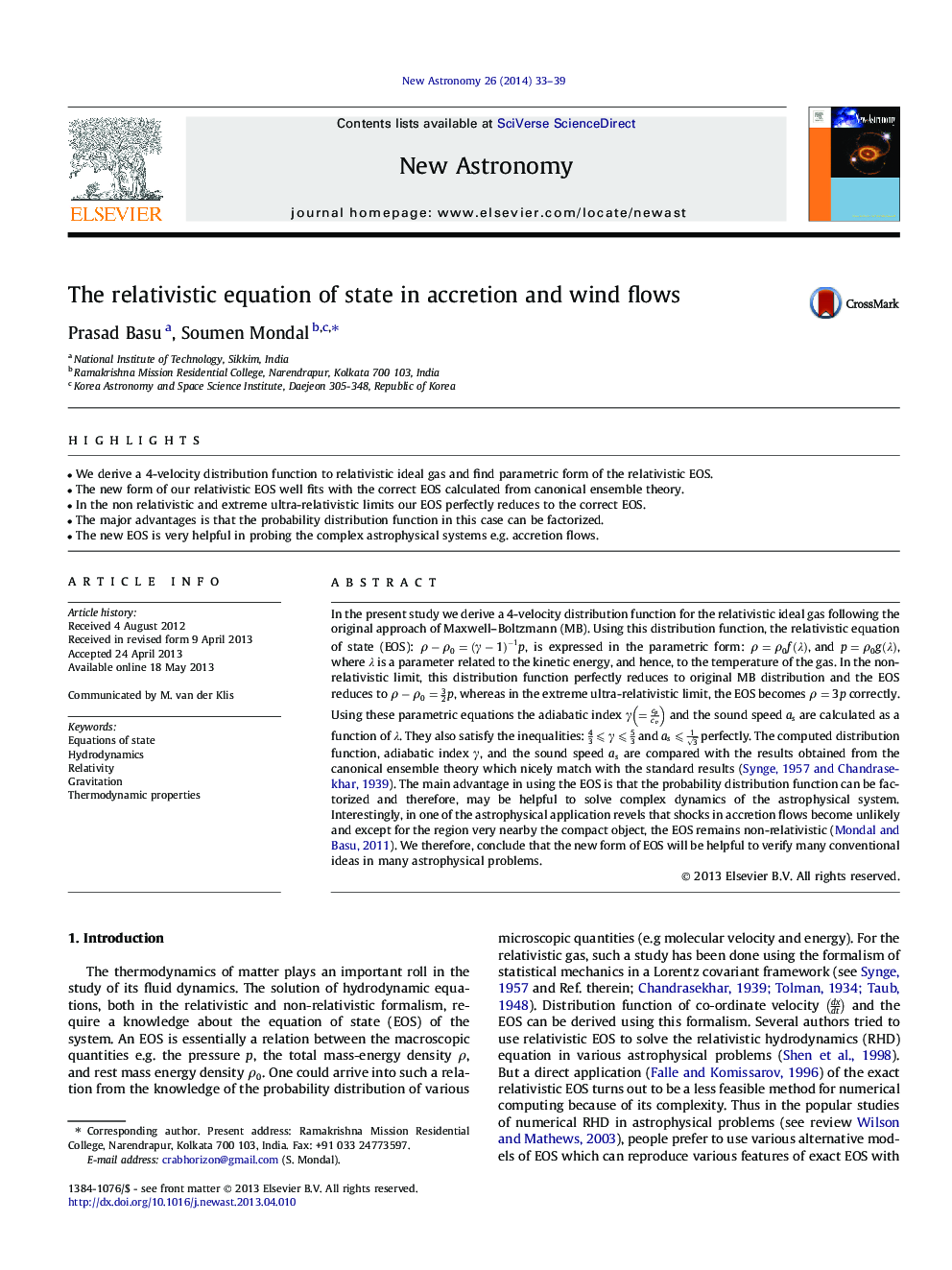| Article ID | Journal | Published Year | Pages | File Type |
|---|---|---|---|---|
| 8141509 | New Astronomy | 2014 | 7 Pages |
Abstract
In the present study we derive a 4-velocity distribution function for the relativistic ideal gas following the original approach of Maxwell-Boltzmann (MB). Using this distribution function, the relativistic equation of state (EOS): Ï-Ï0=(γ-1)-1p, is expressed in the parametric form: Ï=Ï0f(λ), and p=Ï0g(λ), where λ is a parameter related to the kinetic energy, and hence, to the temperature of the gas. In the nonrelativistic limit, this distribution function perfectly reduces to original MB distribution and the EOS reduces to Ï-Ï0=32p, whereas in the extreme ultra-relativistic limit, the EOS becomes Ï=3p correctly. Using these parametric equations the adiabatic index γ=cpcv and the sound speed as are calculated as a function of λ. They also satisfy the inequalities: 43⩽γ⩽53 and as⩽13 perfectly. The computed distribution function, adiabatic index γ, and the sound speed as are compared with the results obtained from the canonical ensemble theory which nicely match with the standard results (Synge, 1957, Chandrasekhar, 1939). The main advantage in using the EOS is that the probability distribution function can be factorized and therefore, may be helpful to solve complex dynamics of the astrophysical system. Interestingly, in one of the astrophysical application revels that shocks in accretion flows become unlikely and except for the region very nearby the compact object, the EOS remains non-relativistic (Mondal and Basu, 2011). We therefore, conclude that the new form of EOS will be helpful to verify many conventional ideas in many astrophysical problems.
Related Topics
Physical Sciences and Engineering
Physics and Astronomy
Astronomy and Astrophysics
Authors
Prasad Basu, Soumen Mondal,
